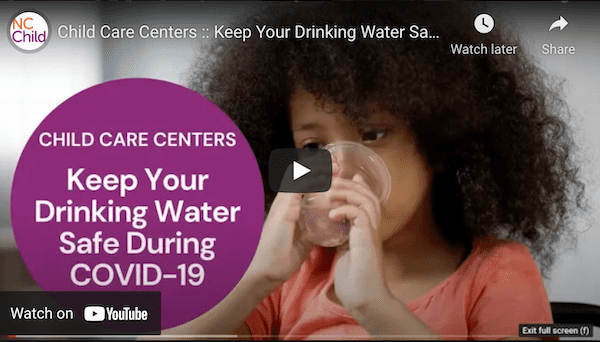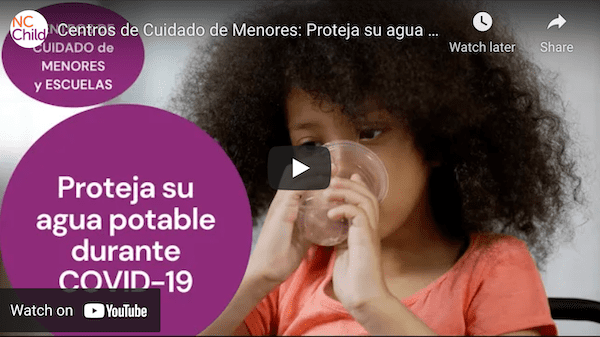Every child deserves the chance to grow up in an environment free from toxic exposures that harm their development. Unfortunately, even after decades of work, some sources of lead exposure still remain – often in lower-income neighborhoods where older buildings mean that old lead paint, or pipes & plumbing fixtures that contain lead, are still in use. As detection improves and we learn more about the harmful effects of lead on the developing brain, it is critical that the NC General Assembly keep the Childhood Lead Poisoning Prevention statute up to date.
Ending childhood lead exposure is a proven strategy to protect young children’s long-term health and development. Even low-level exposure to lead can reduce IQ, harming children’s long-term health, success in school, and future employment and earning potential over their lifetimes. That’s why NC Child collaborates with partners on policies aimed at ending childhood lead poisoning in North Carolina. New legislation would continue moving our state programs towards that goal.
What is the drinking water “lead hazard” for children?
There is no safe level of lead exposure for children. The US EPA, the CDC, and the American Academy of Pediatrics urge water providers to strive for zero lead in children’s drinking water.
The NC Childhood Lead Poisoning Prevention statute (G.S. 130A-131) defines several types of lead hazards for children. Lead in children’s drinking water is defined as a hazard only when it reaches 15 ppb. This level was written more than 20 years ago and is overdue to be updated.
House Bill 272 would update the state Childhood Lead Poisoning statute to lower the threshold for action when lead is found in young children’s drinking water.
North Carolina has already updated other parts of this statute over the years to better match current science and CDC recommendations. Updating the definition of a child’s drinking water lead hazard is an important next step to eliminating childhood lead poisoning in North Carolina.
Lead found in child care drinking water
This work is vital as new lead testing requirements uncover more lead in child care drinking water. Using grant funding from the US EPA, the Clean Water for Carolina Kids program at RTI International has tested thousands of drinking water samples from child care centers across the state. Low levels of lead are widespread, and some centers have found dangerously high levels. The good news is that testing is free, and there are straightforward fixes to remove the lead and keep kids safe. Child care centers can sign up to get their water tested at the Clean Water for Carolina Kids website.
Some of the highest lead samples have been found after child care centers are closed for extended periods. When a center is closed due to a holiday, a COVID detection, or for other reasons, water sits longer in the pipes and can pick up hazardous lead. NC Child and partners created simple Public Service Announcements to help centers understand how to flush their taps after a closure to move the lead out and fresh water in. Please share these PSA’s with early educators in your network:
It’s time to update the Childhood Lead Poisoning Prevention Statute
Revising the definition of a lead hazard in children’s drinking water in the Childhood Lead Poisoning Statute from 15 to 10 parts per billion would extend lead exposure protection to more than 30,000 young children, particularly in child care settings.
Drinking water can be a significant source of lead, especially for formula-fed infants, for whom water contributes as much as 60% of their lead exposure, according to the US EPA. Reducing babies’ and toddlers’ lead exposure has many benefits, not only for individual children, but for the community overall. Reducing lead exposure protects children’s health and readiness to learn. At the population level, effective lead mitigation programs can actually reduce special education spending as a result of childhood lead poisoning.
Not every state has a Childhood Lead Poisoning Prevention statute or program. For more than 20 years, North Carolina has been a national leader in reducing and eliminating childhood lead exposure. As a result, child blood lead levels in our state have dropped dramatically population-wide. Much credit for these results go to the diligent work of the North Carolina Childhood Lead Poisoning Prevention Program (part of the NC Division of Public Health). Updating the definition of a child’s drinking water lead hazard supports the progress of this successful state program.
Special thanks to the students at the Duke University Environmental Law & Policy Clinic. Their research and legal analysis has been essential to the success of this lead reduction work in North Carolina.
Lead Poisoning is Preventable
The children who will most benefit from this proposal are those under age six, who are at highest risk of harm from lead exposure. We can prevent harm, save money, and improve health outcomes for children with common-sense approaches that reduce or eliminate hazardous exposures. These include making sure that all children live in safe, lead free homes and have access to clean drinking water.
Take action for kids’ health
Find out more about lead risks in your community. Parents and pediatricians – check out our LeadFreeNC.org site, designed to help you prevent lead exposure, and take action.




